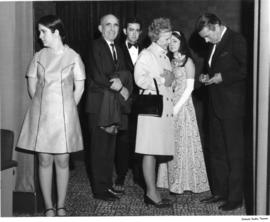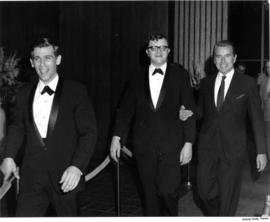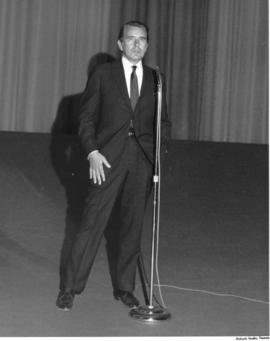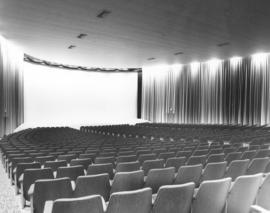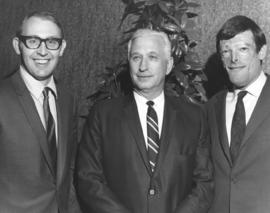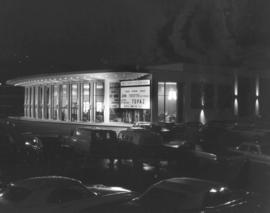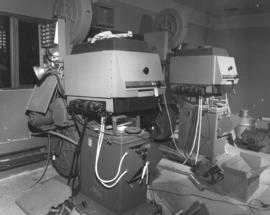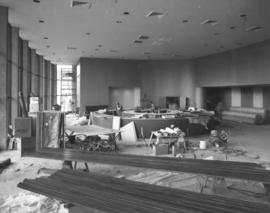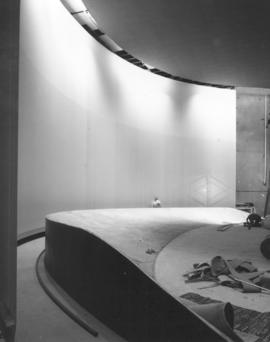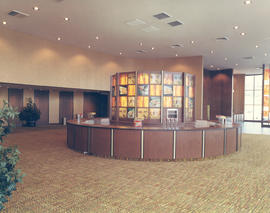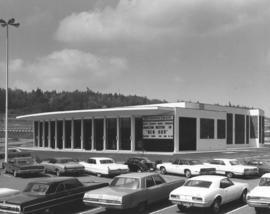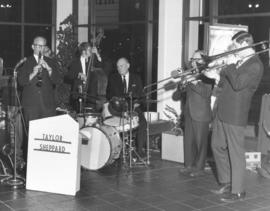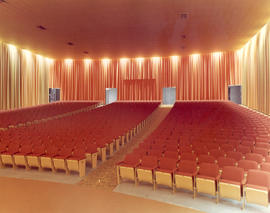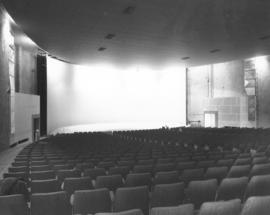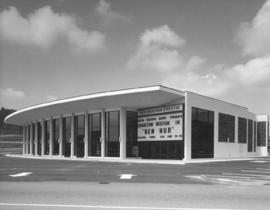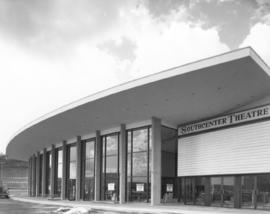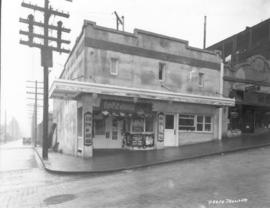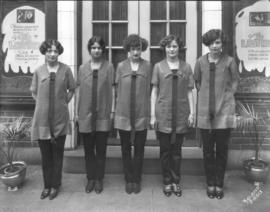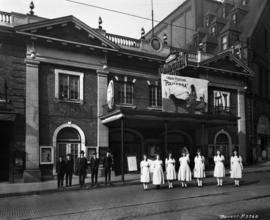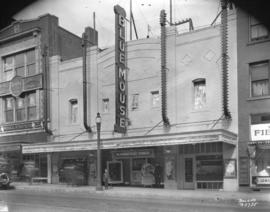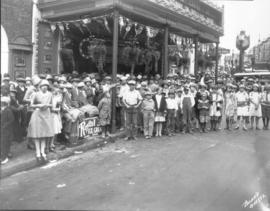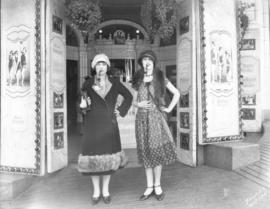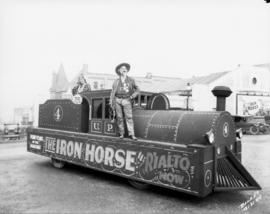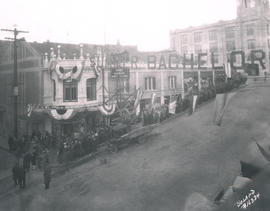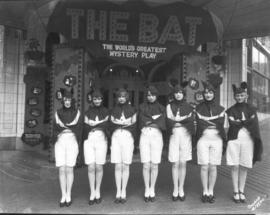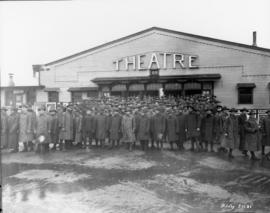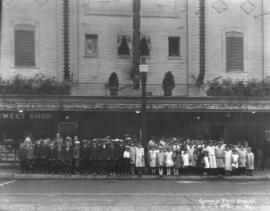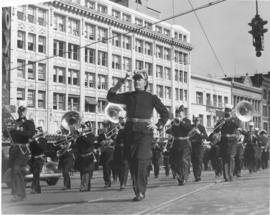On June 13, 1924, five usherettes, all with the latest in bobbed hair, posed in their new summer uniforms, blousy top and slacks in combinations of black and orange, in front of the Colonial Theater, 916-18 Broadway. The women were identified by the News Tribune as, left to right, Evelyn Durrin (head usher,) Mary Marko, Isobelle Pallis (assistant head usher,) Mildred Barnes and one unidentified usherette. The marquee advertised "The Last Hour" with Milton Sills, Carmel Myers, Walter Long and Pat O'Malley, which opened June 14, 1924 and ran at the Colonial for one week. "The Last Hour" was issued in 1923 by Mastadon Films. The Colonial Theater was designed by Roland Borhek and built in 1914. In the thirties, it became the Beverly Theater and in the 40's the Telenews Theater. It has since been demolished. Boland B10313, BU 11,145 (TNT 6/19/24, pg. 8)
Colonial Theater (Tacoma); Motion picture theaters--Tacoma--1920-1930; Ushers--Tacoma--1920-1930; Motion picture industry--1920-1930;
